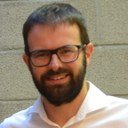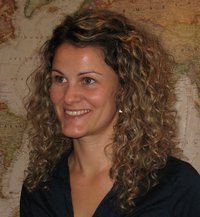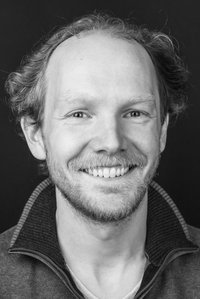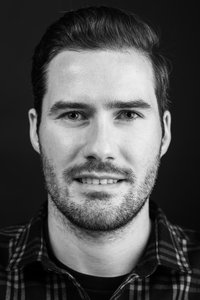
Matthieu Boone (Ugent) - presentation
The UGCT Core Facility: recent developments and applications
Abstract:
At the Ghent University Centre for X-ray Tomography (UGCT), several custom-developed and unique micro-CT scanner systems are being used for research on and with the technique. Notable examples are fast imaging of dynamic processes using the gantry-based EMCT system and hyperspectral X-ray imaging. In all these fields, developments in all stages of the imaging chain, ranging from the setup and its peripheral equipment to analysis post-processing, work together to optimize the final results from the measurements. In this presentation, an overview will be given of the recent developments in hard- and software, as well as some of the recent applications, emphasizing the link between both.
Marta Domínguez Delmás (UvA) - presentation
Computed tomography for non-invasive dendrochronology: are we there yet?
Abstract:
Imaging techniques such as computed tomography (CT) can play a major role in the non-invasive dendrochronological research of sculptures, panel paintings, musical instruments and archaeological artefacts. High-resolution CT images of otherwise inaccessible cross-sections from this type of wooden objects can be used to retrieve tree-ring patterns that enable the determination of the date and provenance of the wood. While this technology represents a major step forward in the non-invasive assessment of material heritage made of wood, its implementation is restricted to very specific scenarios. So are we there yet? With several examples from my own work and from recent literature I will reflect on the advances of CT for non-invasive dendrochronology of cultural heritage objects, and on the challenges still to overcome.
Tristan van Leeuwen (CWI), Felix Lucka (CWI), Martin Fransen (Nikhef) - presentation
The FleX-ray Lab – Past, Present and Future
Abstract:
Five years ago, CWI and partners founded the FleX-ray Lab - a custom-made, fully-automated X-ray CT scanner linked to large-scale computing hardware. At the FleX-ray Lab mathematics and computer science meet, combining novel algorithms and a state-of-the-art X-ray scanner. The Computational Imaging group uses this unique facility to develop advanced computational techniques for 3D imaging in collaboration with partners from health care, science, industry and cultural heritage. In our presentation we will look back at some of the scientific highlights of the past years, and outline future plans.


Tristan van Leeuwen Felix Lucka
Willem Renema (Naturalis) - presentation
Irene Hernández-Girón (LUMC) - presentation
Anthropomorphic Phantoms for Medical Imaging based on 3D printing: the Role of Micro-CT Imaging for Manufacturing Quality Control
Medical imaging researcher, Veni fellow

Division of Image Processing (LKEB), Radiology Department, Leiden University Medical Center (LUMC)
Abstract:
The performance evaluation of medical imaging devices has traditionally been done with test objects (phantoms) based on simple geometries (such as cylinders, for instance) cast on materials mimicking to some extent the patient overall X-ray attenuation. Such geometric phantoms contain different patterns for image quality assessment, like noise, uniformity, linearity of materials attenuation, modulation transfer function…1 State of the art medical imaging devices, are intrinsically tailored to the human body characteristics, for instance with automatic exposure control systems calibrated for patients’ morphometry or iterative and AI-based image reconstruction algorithms which make assumptions about the patient’s characteristics or are trained with patient data. There is a need for expanding the medical image quality assessment framework, including anthropomorphic test objects, mimicking to some extent the overall patient attenuation, shape and morphometry, tissue texture and attenuation and others to some extent. The use of 3D printing plays a significant role in this regard, allowing for manufacturing customized patient anatomical models tailored to specific body parts or medical indications2,3. There is an interest in the medical physics community for these anthropomorphic phantoms with applications for X-ray imaging modalities, for instance Computed Tomography, and for others without the use of ionizing radiation (such as ultrasound or MRI). The accuracy, reproducibility and robustness of the 3d printing process is an expanding field, as there are several manufacturing providers, models, printing techniques, and a wide range of materials available. Micro-CT imaging can play an important role to assess the quality and characteristics of the developed anthropomorphic phantoms, generating ground truths of the objects that can be compared to the original models that were intended to be printed. Some case studies will be presented, ranging from simple 3D printed objects to more complex vessel-like structures, the latter intended to be an anthropomorphic phantom for image quality assessment of Computed Tomography systems4.
- Verdun FR, Racine D, Ott JG, Tapiovaara MJ, Toroi P, Bochud FO, et al. Image quality in CT: from physical measurements to model observers. Physica Medica (2015);31(8):823-843
- Filippou V, Tsoumpas C. Recent advances on the development of phantoms using 3D printing for imaging with CT, MRI, PET, SPECT and ultrasound. Med Phys (2018);45(9):e740-e760
- Du Plessis A, Sperling P, Beerlink A, Tshabalala L, Hoosain S, Mathe N, Le Roux X. Standard method for microCT-based additive manufacturing quality control 1: Porosity analysis. MethodsX, 2018:1102-1110
- Hernandez-Giron I, den Harder JM, Streekstra GJ, Geleijns J, Veldkamp WJG. Development of a 3D printed anthropomorphic lung phantom for image quality assessment in CT. Physica Medica (2019);57:47-57
- NWO funded project 17378: Through the eyes of AI: safe and optimal integration of artificial intelligence in the radiology workflow. Veni personal grant, PI: Irene Hernandez-Giron
